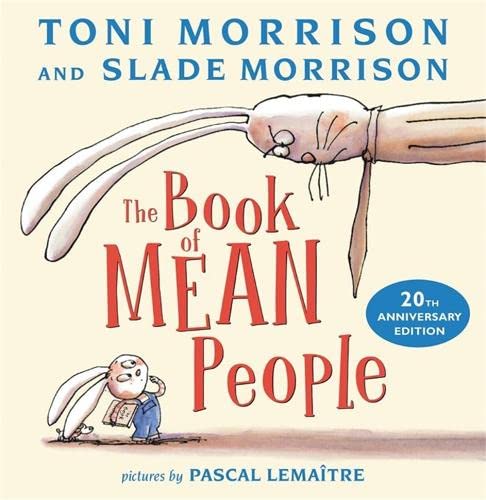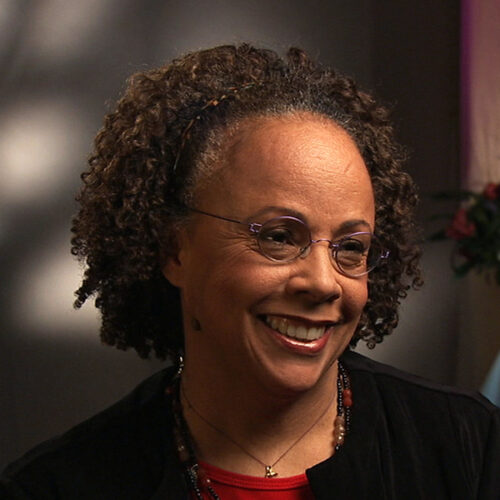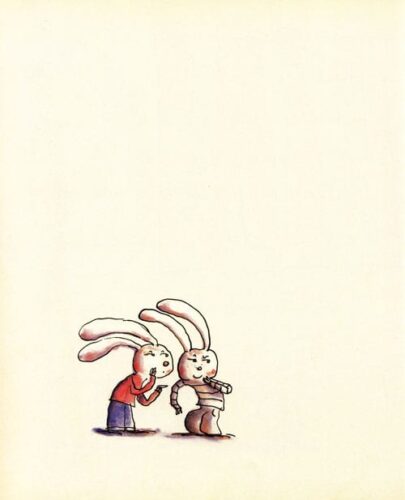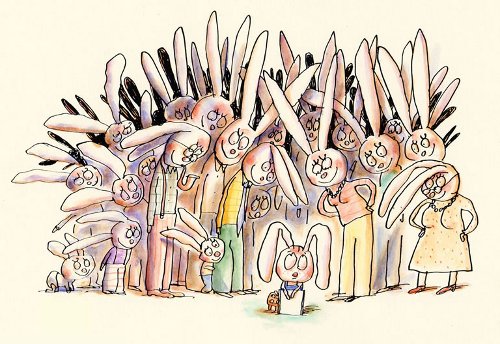Bringing Back the Mean People: Jewell Parker Rhodes Discusses a One-of-a-Kind Toni Morrison Reprint
I want you to look at a book cover for a moment here. Take a good long look:

And before I say anything else, I want you to think for a moment about the role of picture books today vs. the role of picture books in the past. What has changed, and what is the same? And then I want you to think about the picture books that make hard choices. These would be the books that don’t tell happy dappy little stories involving unicorns and farting fish and how special you are. These are the picture books that acknowledge that not everything in childhood is easy. There’s a whole subgenre of books where things are hard and, sometimes, there’s a comfort in finding a book that agrees with you on this point.
Which brings us to Toni Morrison.
In her lifetime, Ms. Morrison wrote some of the greatest novels in history. She also, with her son Slade, dabbled in picture books from time to time. As a general rule, I don’t much trust adult authors when they try writing for kids (I’m looking at you, Elena Ferrante). But Toni Morrison wasn’t like other writers. Her books for children were distinct, with ideas and points of view you’d find nowhere else. And in no book is this more vibrant and apparent than the marvelously named The Book of Mean People. Originally released in 2002 with art from Pascal Lemaitre, the book is seeing new life this year with a 20th anniversary re-release and an Afterword by none other than author Jewell Parker Rhodes.
ADVERTISEMENT
ADVERTISEMENT
If you were in my shoes, how could you resist? I had to know more. Because this book is, if nothing else, honest about how kids think and feel. And Jewell Parker Rhodes was willing to tell me more about it.
Betsy Bird: Thank you so much for joining me here today! Ms. Rhodes, I think we’re all curious. So just to start us off, how did you first come to know of this book?

Jewell Parker Rhodes: As a professor, I’d taught graduate Morrison seminars, presented at conferences and published an article on Ms. Morrison’s Beloved. So, I knew she’d written plays and children books. When Farrin Jacobs, Editorial Director at Little Brown Books for Young Readers, asked me to write the AFTERWORD for The Book of Mean People (illustrated by Pascal Lemaitre), I was ecstatic. Celebrating Morrison’s picture book collaboration with her son, Slade, provides the perfect opportunity to reaffirm her wide-ranging talent and the creative and skillful child-centered insights she and her son explored
BB: It was rather inspired. In your Afterword to the 20th anniversary edition you say that this is a “complex, nuanced picture book”. Can you talk a little bit more about what makes it so unique?
JPR: Historically, picture books that feature bunnies focus on cuteness, on socializing the child in terms of friendship, family or school, and on emotional self-awareness. Ms. Morrison upends these notions in The Book of Mean People by centering and prioritizing the child’s perceptions which may seem rebellious and antagonistic to adults. To the bunny-child, relationships seem fraught with conflicting demands, contradictions, and orders about what one “can’t” rather than “can” do and feel. Embodying an innate skepticism about conformity and what others deem proper and right, the bunny expresses its own determined agency. Others may frown, scold and shout but the bunny decides to “smile anyway” and triumphs over meanness with optimism. The Morrisons are advocates for valuing the interior life of the child and their developing logic and intense emotional responses. Lemaitre’s final image depicts the bunny shedding clothes (even the pet dog sheds his collar!) while following a butterfly and running toward nature. Perhaps the Morrisons trust nature more than nurture? Given slave and civil rights history, both Morrisons were aware of the black struggle for equality. Notably, too, blacks were often viewed pejoratively as “children.” Yet, drawing upon black folklore’s use of animals, the Morrisons make the bunny-child, unlike the other characters, wise, independent, decisive, self-aware and happy!

BB: Obviously when you talk about bunny-related picture books people think you’re talking about cutesy pablum. I can imagine that this book might be a shock if that was your expectation. Do you think subversive picture book texts like this one would do better today in 2022 than the book did back in 2002?
JPR: Yes, yes, yes and another yes! Rather than being western-centric and nostalgic and didactic, children’s literature today seeks to represent wider, more diverse identities and audiences. Childhood’s complex psychological, neurological, and biological processes are better understood. Significantly, children are no longer seen as malleable, “blank slates,” but instead as beings with cognition and desires and personal and social needs.
ADVERTISEMENT
ADVERTISEMENT
BB: Part of what makes this book such a standout is its raw honesty about what kids feel. It’s the kind of stuff you’d find in a Sendak or an Ungerer or a Viorst picture book. There’s no sugar-coating to protect grown-ups’ feelings. That it comes from Toni Morrison is particularly interesting. Not every great author of books for adults is capable of writing for kids. Why do you think Ms. Morrison was able to straddle both genres so well?

JPR: Toni Morrison was exceptional in her capacity for empathy and for appreciating life (even its smallest moments) in the context of humanity’s mythic scale. Morrison knew the link between the African American oral storytelling and cultural and personal survival. Likewise, she knew writing as a person of color in America was historically seen as transgressive. As a black woman artist, Morrison was the epitome of honesty and truth-telling. Validating the individual and their right to declare, “I AM,” whether they be large or small was, I believe, part of her creative mission. Collaborating on ten books with her son is also a testament of how her respect (and Slade’s respect) straddled generations. Is it any wonder she can write for both adults and youth? Great writers, like great actors, can embody identities and perspectives. It takes compassion, empathy, and being a humanist in the best possible sense.
BB: Finally, what would you like to see happen with this book now that it’s hitting our shelves again?
JPR: My hope is The Book of Mean People will serve as an entry for more people to appreciate Morrison’s timeless books for children. It’ll make apparent her collaborative skills and the talents of Slade Morrison and illustrator, Lemaitre. It’s uplifting to note how a Nobel Prize winning author celebrated children, the importance of reading to children and the infinite value of children’s literature.
A billion thanks to Ms. Rhodes for answering my questions today. Thanks too to Victoria Stapleton and the folks at Little, Brown & Co. for connecting us. The Book of Mean People hits bookstores everywhere (again!) November 8th. Look for it then and revel in its utter and complete originality.
Filed under: Interviews
About Betsy Bird
Betsy Bird is currently the Collection Development Manager of the Evanston Public Library system and a former Materials Specialist for New York Public Library. She has served on Newbery, written for Horn Book, and has done other lovely little things that she'd love to tell you about but that she's sure you'd find more interesting to hear of in person. Her opinions are her own and do not reflect those of EPL, SLJ, or any of the other acronyms you might be able to name. Follow her on Twitter: @fuseeight.
ADVERTISEMENT
ADVERTISEMENT
SLJ Blog Network
2024 Books from Pura Belpré Winners
Team Unihorn and Woolly | This Week’s Comics
Parsing Religion in Public Schools
ADVERTISEMENT







